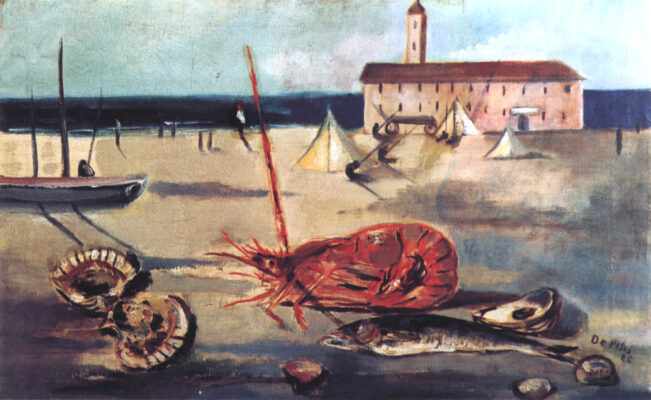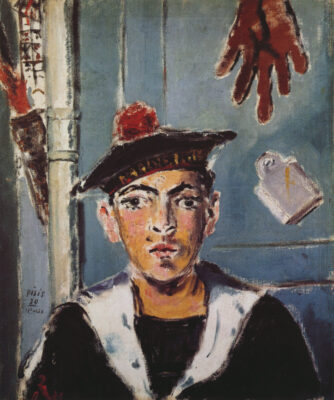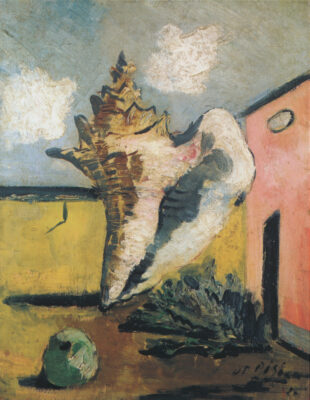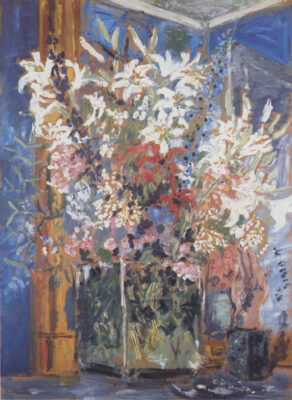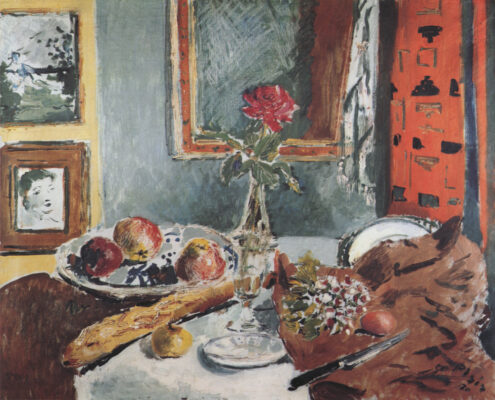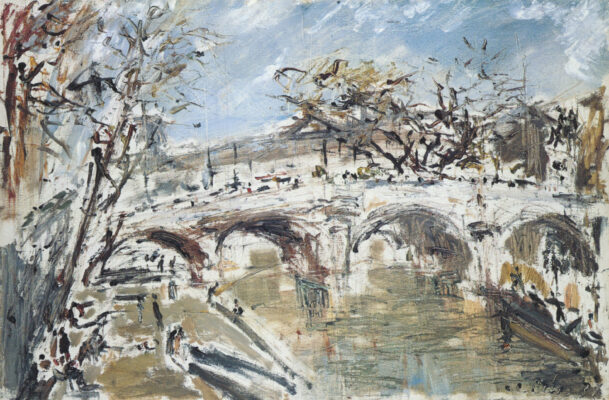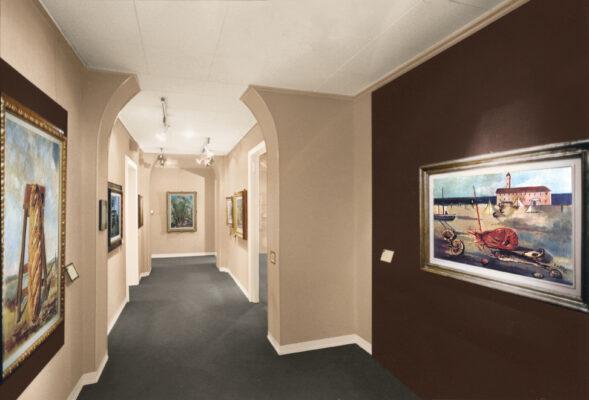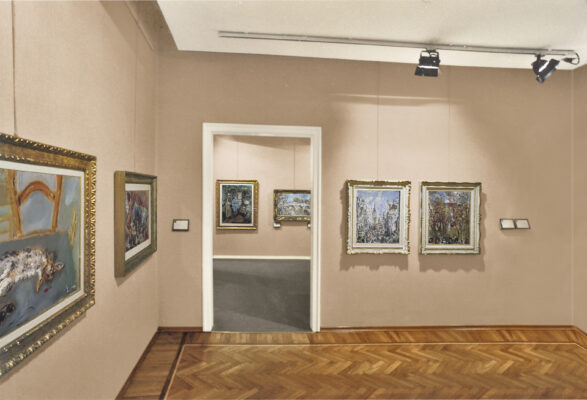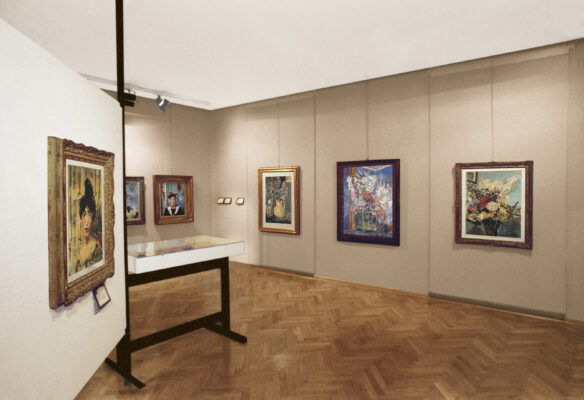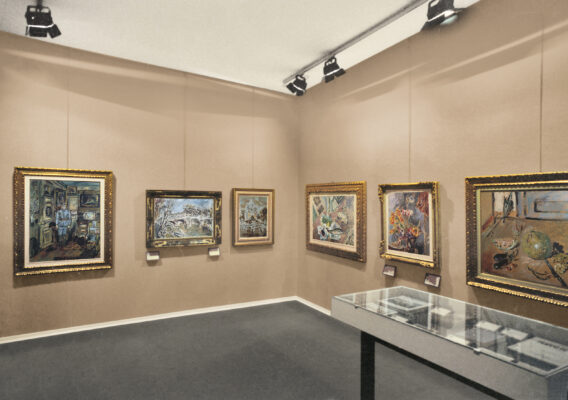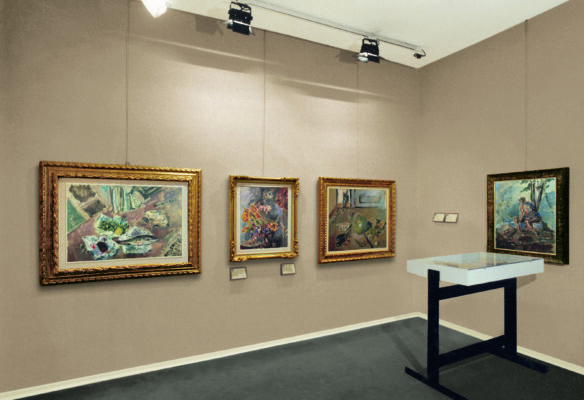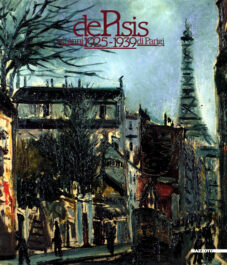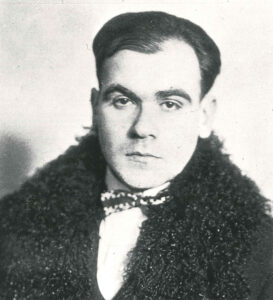Home / Exhibitions / de Pisis, gli anni di Parigi 1925-1939
de Pisis, gli anni di Parigi 1925-1939
curated by Giuliano Briganti
13.12.1987 — 31.01.1988
de Pisis, gli anni di Parigi 1925-1939
curated by Giuliano Briganti
13.12.1987 - 31.01.1988Show introduction
De Pisis, gli anni di Parigi exhibition, opened at Galleria dello Scudo on December 13, 1987, was focused on a particular period in the biographical and artistic life of Filippo de Pisis, namely the fourteen years spent in the French capital between 1925 and 1939, undoubtedly the happiest of his career from a pictorial point of view.
The exhibition, realized under the patronage of Regione del Veneto and Municipality of Verona, offered through a selection of sixty paintings a specific and unprecedented analysis of the language and the different themes developed by the artist, thanks also to suggestions received and reworked during his stays in Italy, in London and southern France.
Rue des Volontaires (Parigi con la Tour Eiffel) (1925) opened the exhibition path. This is one of the first canvases painted by de Pisis on his arrival in France. The tendency to enliven his palette in favour of a more immediate vision was already evident here. Natura morta marina con aragosta (Marina con aragosta) (1926) is one of the sea paintings published by Waldemar George in his monograph on the artist from 1928, in which the metaphysical experience and love for seventeenth-century still lives appear merged together with the tones of French painting and the author’s dearest literary references. Similarly, La grande conchiglia (1927) is a painting resolved according to a compositional scheme typical of those years, with the combination of bright colours, from the ochre of the beach to the green of apples and vegetables, to the pink of the hut. Il marinaio francese (1930) blends two themes – man’s portrait and metaphysical composition – according to a compositional structure and a sensitivity in the expressive choice of the subject that reveals the attraction for the painting developments of the protagonists of the Paris school.
The show exhibited paintings belonging to Giovanni Comisso, such as La bottiglia tragica (1927), La coupole or Le Quai Voltaire (1928), Il gladiolo fulminato (1930); then Interno con natura morta (1930), painted in his home in Paris; I grandi fiori di casa Massimo (1931), among the most sensual and powerful floral compositions, boasting a dense chromatic symphony. The human figure was featured in works such as the imaginary portrait of the famous French writer Colette (1933) and Il soldatino francese (1937) from Galleria d’Arte Moderna Mario Rimoldi in Cortina d’Ampezzo. The tour ends with glimpses of London, such as White Hall (1935), and images of Paris like Le Pont Neuf and Nôtre Dame (1937), and Quai Voltaire (1939).
A section of the exhibition illustrated through photographs and writings the critical-literary activity of the author and his relationship with the cultural environment of Paris, in particular with Italian artists residing in the French capital.
The exhibition, designed by Massimo Di Carlo, Luisa Laureati and Massimo Simonetti, was curated by Giuliano Briganti. His critical contribution is present in the catalogue published by Mazzotta beside interventions by Valentino Brosio, Giorgio Cortenova, Corrado Levi, Nico Naldini and the artwork analysis by Daniela De Angelis.
